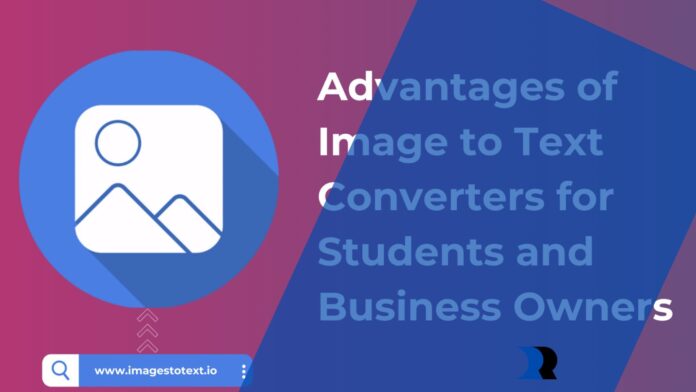The advent of technology has paved the way for a myriad of tools designed to facilitate learning, business operations, and everyday life. Among these tools, Picture to Text AI Converters stand out for their versatility and utility. These converters have proven to be valuable assets for different groups, notably students and business owners.
This article explores the myriad benefits of Image to Text converters for these user groups.
What Exactly is an Image to Text Converter?
The Character Calculator converters, also known as Optical Character Recognition (OCR) systems, are tools that convert written or printed text in images into machine-encoded text. They can extract text from various formats, including photographs, scanned documents, and even graphics in web pages.

There are different types of Image to Text ai tools available, each with their unique features. Some offer language translation capabilities, while others are designed for specific tasks such as business card reading or handwriting recognition. These tools have greatly evolved over time, with recent advancements focusing on improving accuracy, speed, and the ability to handle complex documents.
Benefits of Image to Text Converters for Students
For students, Picture to Text converters offer a range of benefits that can enhance their learning and research capabilities:
- Quick digitization of printed resources: Students can easily convert printed books, journals, or study materials into digital text, which can then be stored, searched, and annotated.
- Easy access to information from diagrams and charts: Some advanced converters can extract text from complex visuals, making it easier for students to gather data.
- Simplifying the process of citation: Extracted text can be quickly referenced, saving students time when citing sources in academic papers.
In terms of note-taking, photo to Text converters bring efficiency to the process:
- Capture of whiteboard notes: Instead of manually writing notes, students can snap pictures of the whiteboard and convert them into text.
- Conversion of photographed documents to editable text: This allows students to add personal notes and highlights.
Moreover, Image into Text converters improve accessibility for students with disabilities:
- Assistance for visually impaired students: By converting images to text, these tools can make content accessible via text-to-speech software.
- Support for students with learning disabilities: Dyslexic students, for example, can benefit from converting text to a digital format that can be manipulated to suit their reading needs.
Advantages of Picture to Text Converters for Business Owners
For business owners, picture to Text converters streamline business operations:
- Easy conversion of paperwork into digital data: This enables businesses to move towards a paperless office, reducing clutter and improving efficiency.
- Quick extraction of information from business cards, receipts, invoices: Businesses can automate data entry processes, saving time and reducing errors.
These tools also enhance communication and collaboration:
- Sharing of information captured from visuals: Team members can easily share and collaborate on digitized data.
- Collaboration on digitized data in real-time: This can improve project management and team coordination.
Furthermore, photo to Text ai converters contribute to improved data management and security:
- Reducing physical storage needs: By digitizing paperwork, businesses can reduce their reliance on physical storage spaces.
- Backing up important documents digitally: This ensures that valuable information is not lost due to physical damage or misplacement.

Future Trends and Opportunities in Image to Text Conversion
Looking forward, advancements in artificial intelligence and machine learning are likely to further improve the functionality and efficiency of Image to Text converters. Predicted technological advancements include:
- Enhanced accuracy:Future converters are expected to have near-perfect accuracy, even with complex documents, handwriting, and poor-quality images.
- Real-time conversion: We may soon see the advent of systems that can convert text in real-time, which would be beneficial in situations like live lectures or meetings.
New potential areas of application for picture to Text conversion in education and business are also expected:
- Interactive learning: Picture to Text converters could be integrated with Augmented Reality (AR) and Virtual Reality (VR) technologies to create interactive learning experiences for students.
- Advanced data analysis: For businesses, converters could be used in conjunction with Big Data and Analytics tools to extract and analyze information from a wider range of sources, thus aiding in decision-making processes.
Conclusion
Image to Text ai tools offer a range of benefits for both students and business owners, from enhancing learning capabilities and improving accessibility, to streamlining business operations and improving data management. As technology continues to advance, we can expect these tools to become even more integral to our educational and professional lives. The transformative impact of Image to Text converters, coupled with the endless possibilities for future advancements, underscores the importance and potential of this technology in our increasingly digitized world.


